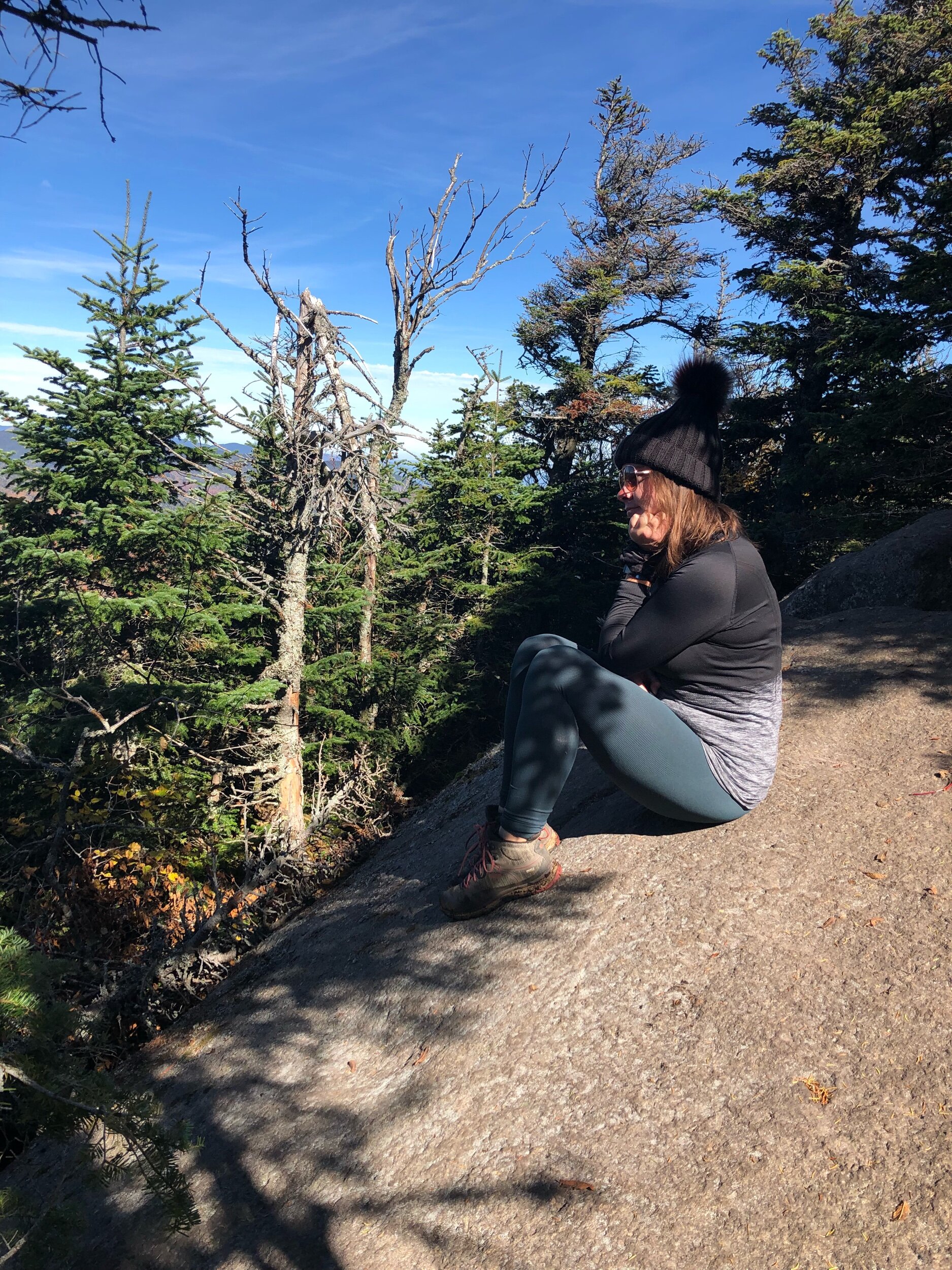How [Not] To Summit A High Peak: A True Story
a quick story to put this post into perspective:
Nearly two years ago, a girl stumbled upon this mountain one late afternoon after curiosity got the best of her and she got off trail for the majority of the day. She saw a bridge and felt that this looked like it could lead to Indian Head. She would come to find out it definitely did not.
Earlier on in the day, she had accidentally summited a high peak (Lower Wolf Jaw) with no map, which is an accomplishment in itself (yet she didn’t realize that at the time.) But she persevered, determined to make it to the infamous Indian Head. To her complete surprise, there was hardly any cell service for her to download a map, so she was left to figure it out on her own- that is, until she met someone who shared their map, and led her closer to her destination.
Shortly after they parted ways, she made some new friends from Quebec, who were also in search of the Indian Head trail. They would all go on to finally summit Indian Head together - the new friends were even so kind as to share their homemade baked goods, since the girl ran out of food, not prepared for the unexpected twists and turns of the day. The girl then trudged down Lake Road as the sun was about to set, with no headlamp and no jacket- it was October. Thankfully, she met another new friend to hike out the road with who shared his joys of working in the Stewart’s corporate office.
That girl was me.
I felt enormous gratitude as I summited Indian Head for the first time since that day in October 2018. There is no replication for experiences, but there is ample research to be done and preparedness you can take. I’ve learned this the hard way- and I continue to learn every single time I am out on the trail.
I feel like a very different person and hiker since that day. So whenever you feel “stuck”, remember: change takes time. Eventually, all those small steps you took will add up to something greater, and you’ll look back and understand why everything had to happen the way that it did. Even when you’re hungry and lost.
I am lucky that my story had a good ending- but I have taken my solo adventures especially in the High Peaks very seriously ever since.
A few key takeaways:
A map and a plan are a must. No exceptions - delay your trip or pick another day if you don’t have these things or a buddy who you trust and is knowingly going to guide or take the lead.
Invest in illumination, along with spare batteries: this means a headlamp or a form of light that will assist you that is not your cell phone. You never know how long your trip could take or the events that could happen on the trail. Do not rely on your cell phone! Pretend it’s not with you.
Your plan: know it, understand it and tell others (at least 2 different people) where you are going. This includes route, parking area, trailhead, and the local ranger or emergency phone number.
Sign in at the trail register with your accurate info, if one is available. No pen/pencil at the log? Carry a spare in your pack so you can sign in. Not only will this help you, it could also be useful for others if rescue teams are looking for a lost hiker(s) - they can contact you and potentially obtain valuable info if you happened to pass them. (This also helps trail maintenance understand the foot traffic for a given year.)
The mountains can be unforgiving; weather can change in minutes, and the conditions at the summit could be (and most often, will be) entirely different than at the trailhead. Expect the unexpected.

